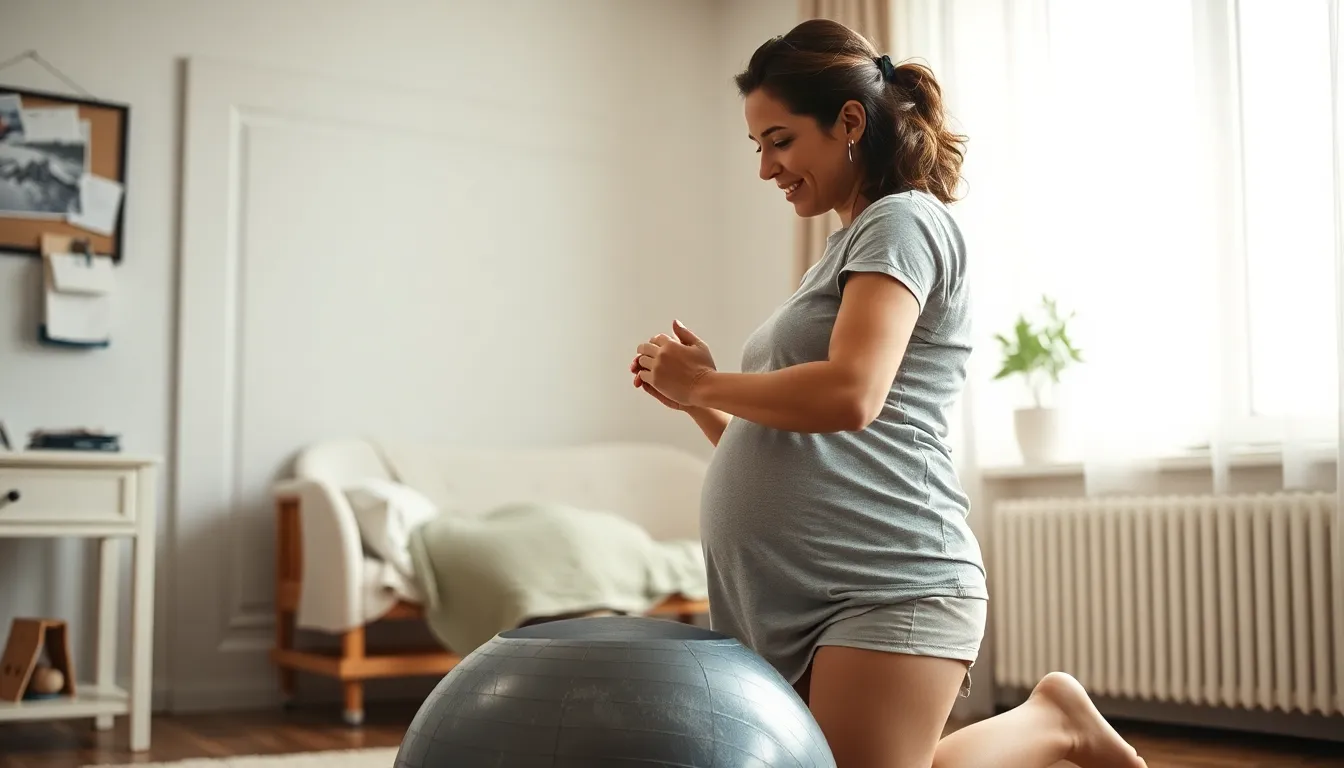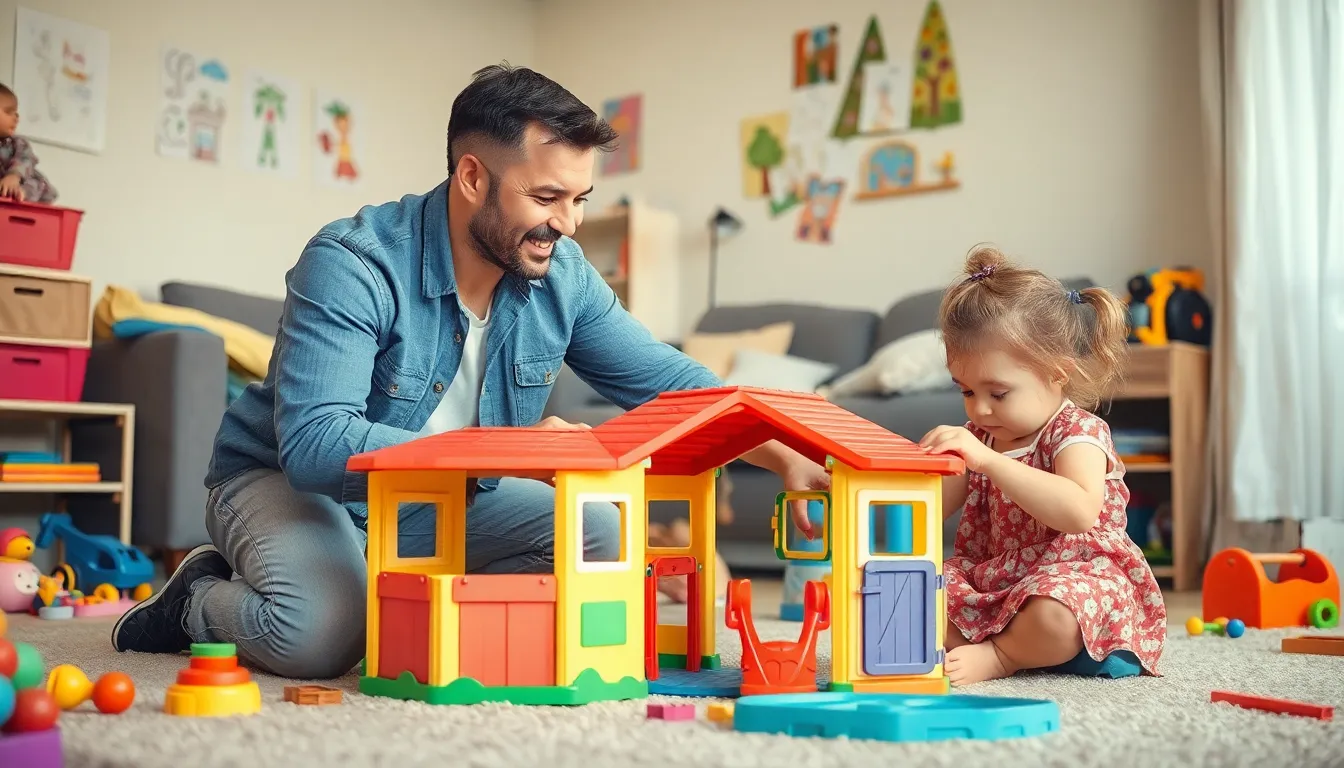In a world where every moment counts, the concept of active birth shakes up the traditional approach to childbirth. Imagine a delivery room where movement is encouraged, and the birthing process feels more like a dance than a medical procedure. Active birth empowers mothers to take charge, transforming the experience into one that’s not just about the baby but about celebrating the strength of women.
Gone are the days of lying flat on a bed, waiting for the inevitable. With active birth, it’s all about rhythm, relaxation, and a little bit of fun. Whether it’s swaying, squatting, or even bouncing on a yoga ball, this approach embraces the natural instincts of the body. So, if you’re ready to kick those outdated birthing practices to the curb, let’s dive into the world of active birth and discover how it can make the journey to motherhood a little more fabulous.
Table of Contents
ToggleOverview of Active Birth
Active birth transforms traditional childbirth practices by promoting movement and empowering mothers. This approach encourages women to embrace their natural instincts during labor, leading to a more intuitive birthing experience. Various movements, such as swaying, squatting, and kneeling, create an environment where mothers feel in control and connected to their bodies.
Research indicates that active birth can reduce labor complications and enhance maternal satisfaction. Engaging in upright and mobile positions helps with gravity’s assistance during contractions. Movement can facilitate progress and comfort, making the experience feel more rhythmic, almost like a dance.
Active birth environments prioritize support from partners and caregivers. Encouragement plays a crucial role, fostering confidence and reassurance. Tools like birthing balls, mats, and even ropes can provide stability and aid in movement. Choosing a supportive setting helps mothers remain engaged and supported throughout this transformative journey.
Health professionals increasingly advocate for active birth. Studies show that women who adopt this method often experience shorter labors and lower rates of medical interventions. The overall impact on maternal and infant health underscores the importance of creating spaces that respect and promote active participation during labor.
Embracing active birth represents a significant shift in the perception of childbirth. By prioritizing movement and instinct, it allows women to experience the power of their bodies fully and celebrate the transition to motherhood.
Benefits of Active Birth

Active birth presents various advantages, enhancing both physical and emotional well-being during the childbirth process. Emphasis on movement and upright positions greatly impacts overall labor experience.
Physical Benefits
Active birth often leads to shorter labor durations. Research indicates that mothers in mobile positions experience decreased pain levels. Engaging in techniques like squatting and leaning allows gravity to aid the birthing process. Improved fetal positioning can occur, reducing the risk of complications. Many women report a smaller need for interventions such as epidurals or cesarean sections. Enhanced muscle strength and endurance result from utilizing active positions, promoting better recovery post-birth.
Emotional Benefits
Active birth typically fosters a sense of empowerment for mothers. Women feel more in control as they follow their instincts during labor. Maintaining mobility contributes to reduced anxiety and fear. Supportive environments during active birth help cultivate a positive emotional atmosphere. Building stronger connections with partners often occurs, enhancing shared experiences. Many report increased satisfaction with their childbirth experience, leading to greater overall well-being. This positive emotional state can influence postpartum recovery as mothers adjust to new roles.
Techniques of Active Birth
Active birth incorporates various techniques that enhance the experience of childbirth. Breathing and movement play crucial roles in this dynamic process.
Breathing Techniques
Breathing techniques promote relaxation and focus during labor. Controlled breathing helps manage pain by reducing tension. Many women utilize the rhythm of their breaths to stay centered. Techniques such as deep abdominal breathing and slow, rhythmic inhalation foster a sense of calm. Inhaling through the nose and exhaling through the mouth can create a soothing atmosphere. Specific patterns, like the “hee-hee-hoo” method, guide mothers through contractions. Health professionals encourage practicing these techniques in advance, as they provide comfort and support during labor.
Movement and Positioning
Movement and positioning facilitate more effective labor. Various stances such as squatting, kneeling, or swaying allow for better fetal positioning. Mothers often respond to their bodies’ signals, changing positions as needed for comfort. Incorporating a birthing ball can enhance stability and promote freedom of movement. Studies indicate that upright positions reduce labor durations. Engaging partners in this process can add emotional support. Frequent changes in position create a dynamic labor environment, optimizing both comfort and progression. Active positioning empowers mothers, reinforcing their control during childbirth.
Active Birth in Practice
Active birth thrives in a supportive environment that encourages movement and comfort. Partners, family members, and caregivers create an atmosphere that empowers mothers during labor. Continuous encouragement facilitates emotional strength, enabling mothers to engage fully with the process. Welcoming spaces often feature tools like birthing balls and mats, promoting physical activity and relaxation. Encouragement from support systems significantly impacts maternal satisfaction, enhancing the overall experience. A positive environment not only fosters connection but also bolsters confidence, leading to smoother births.
Practitioners play a crucial role in the success of active birth. They educate mothers on effective techniques and emphasize the importance of movement and breathing. Informed support helps women understand their options, contributing to a more empowering experience. Practitioners advocate for upright positions, guiding mothers towards beneficial movements. Their expertise in managing discomfort equips mothers with tools for self-advocacy during childbirth. Regular communication ensures mothers feel valued and encourages a collaborative approach to the birthing process. This partnership reinforces the importance of maternal autonomy in active birth.
Challenges and Considerations
Active birth presents unique challenges that require careful consideration. Many women may experience anxiety about deviating from traditional birthing methods. Pain management in active delivery can differ from standard practices, necessitating preparation and education about alternative coping mechanisms. Support systems play a crucial role in alleviating these concerns; partners and caregivers must provide ongoing encouragement.
Not every setting is conducive to active birth. Hospitals may lack the necessary resources or space for movement, which affects the overall experience. Birth centers often prioritize active methods, but availability varies widely. Understanding each environment’s limitations helps mothers make informed choices regarding their birthing location.
Cultural norms also influence perceptions of active birth. Communities sometimes promote passive delivery methods, creating pressure on mothers to conform. Discussions within families and communities around active birth can pave the way for greater acceptance and understanding.
Additionally, physical limitations can impact the ability to engage in active birth techniques. Some women may face health conditions that restrict movement, leading to frustration. Healthcare providers should assess each woman’s unique scenario to offer tailored advice, ensuring that those with restrictions still experience a positive birth journey.
Practicing active birth techniques before labor enhances confidence during childbirth. Joint classes or workshops provide valuable knowledge and skills, enabling mothers to feel more prepared. Engaging in these learning experiences fosters a sense of community amongst expecting mothers.
Decisions made during active birth benefit from strong advocacy. Mothers should communicate preferences clearly, ensuring that their desires are respected. Open conversations with healthcare professionals about active techniques contribute to a more satisfying and empowered birthing experience.
Active birth transforms the childbirth experience by empowering mothers through movement and choice. This approach not only promotes physical comfort and reduces complications but also fosters emotional well-being, allowing women to feel in control during labor. With supportive environments and active participation from partners and caregivers, mothers can navigate this journey with confidence.
Embracing active birth techniques prepares women for a more dynamic labor experience, enhancing their connection to their bodies and their newborns. As healthcare providers continue to advocate for this method, the positive impacts on maternal and infant health become increasingly evident. Ultimately, active birth represents a celebration of motherhood and a powerful step toward a more fulfilling childbirth experience.







